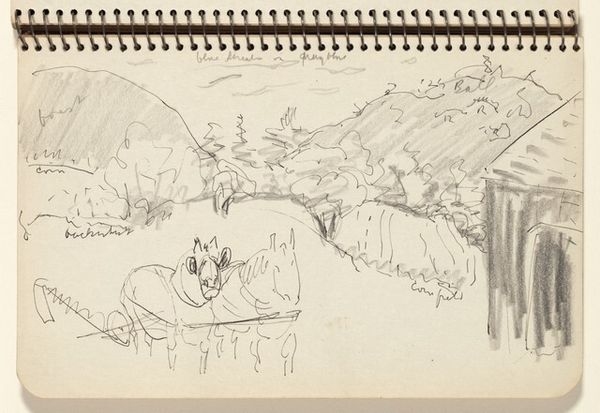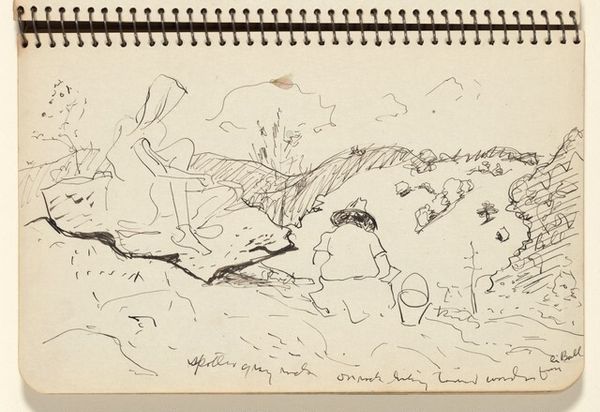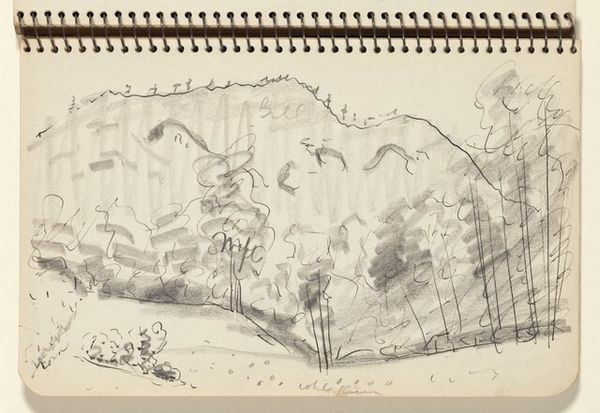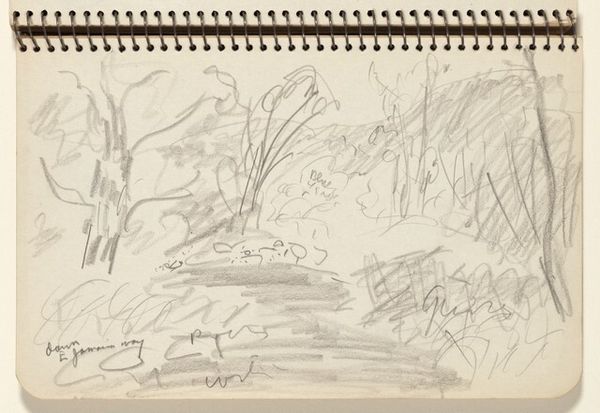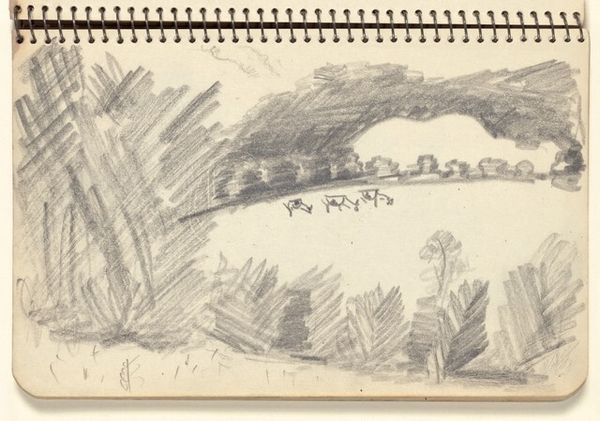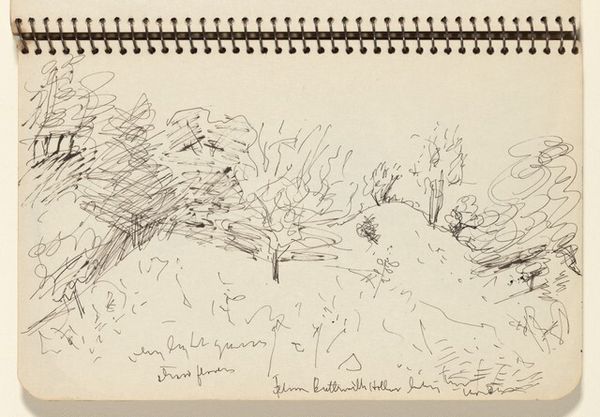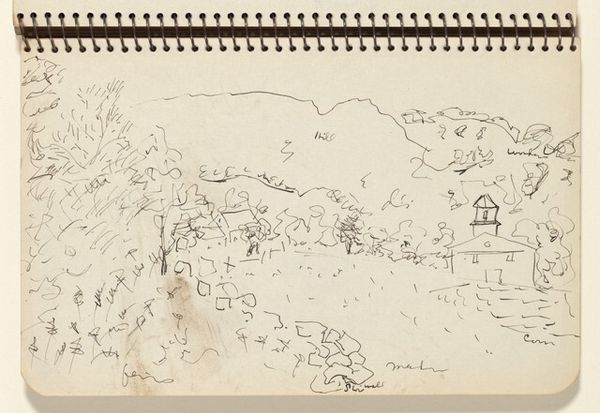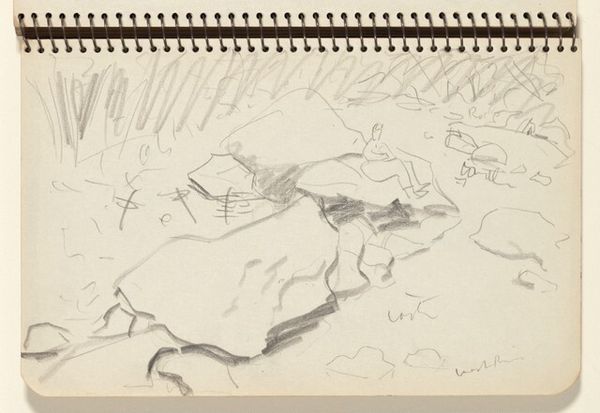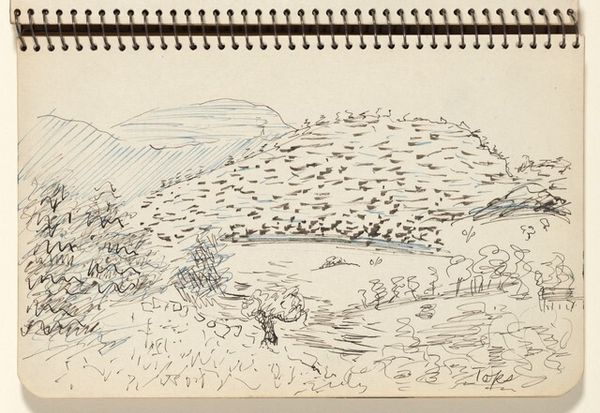
drawing, pencil
#
drawing
#
landscape
#
figuration
#
pencil
Dimensions: overall: 12.8 x 20 cm (5 1/16 x 7 7/8 in.)
Copyright: National Gallery of Art: CC0 1.0
Editor: This is Milton Avery's "Seated Figure in a Landscape," a pencil drawing from 1943. It’s a pretty simple sketch, capturing a serene scene with a figure, cows, and a gentle landscape. What strikes you most about this piece? Curator: What I find compelling is its connection to the American art scene during the Second World War. Avery, like many artists of his time, seems to be turning inward, focusing on the pastoral and domestic, perhaps as a response to the anxieties of war. Notice how the loose, almost nonchalant, lines belie a deliberate simplification of form. Do you think this simplification is purely aesthetic? Editor: Not purely, no. I see how simplifying the landscape could be about creating a sense of refuge, a safe space, maybe even a deliberate contrast to the chaos happening globally at that time. So, the apparent simplicity serves a deeper social purpose? Curator: Precisely! The “everyday” becomes a site of quiet resistance, a celebration of the values seemingly threatened by conflict. Consider the public role of art during wartime – how it either galvanizes nationalistic fervor or, as in Avery's case, offers a counter-narrative rooted in peace and introspection. Are the cows political actors? Certainly not in themselves! Editor: But by choosing them as subjects, by turning towards the bucolic, Avery's making a statement. This reframes how I see supposedly ‘simple’ landscape drawings. Curator: Absolutely. Avery’s landscape serves as both an aesthetic and a cultural marker. By turning away from abstraction, toward representation, and the social role, he connects with his audience more directly, maybe. Food for thought, huh? Editor: It definitely is! I'm starting to appreciate how seemingly straightforward images can carry such weighty historical and cultural significance. Curator: Indeed. Art invites us to look closer at the dialogue between personal expression and societal currents.
Comments
No comments
Be the first to comment and join the conversation on the ultimate creative platform.

